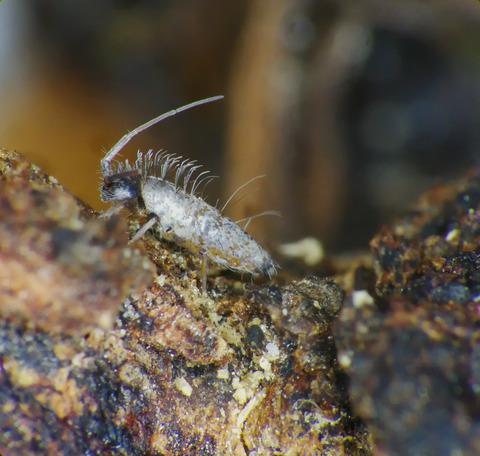当前位置:
X-MOL 学术
›
Funct. Ecol.
›
论文详情
Our official English website, www.x-mol.net, welcomes your
feedback! (Note: you will need to create a separate account there.)
Strangers in a strange land: Globally unusual thermal tolerance in Collembola from the Cape Floristic Region
Functional Ecology ( IF 4.6 ) Pub Date : 2020-06-02 , DOI: 10.1111/1365-2435.13584 W. P. Amy Liu 1 , Laura M. Phillips 1 , John S. Terblanche 2 , Charlene Janion‐Scheepers 3, 4 , Steven L. Chown 1
中文翻译:

陌生土地上的陌生人:佛得角海角Collembola地区的全球异常热耐受性
更新日期:2020-06-02
Functional Ecology ( IF 4.6 ) Pub Date : 2020-06-02 , DOI: 10.1111/1365-2435.13584 W. P. Amy Liu 1 , Laura M. Phillips 1 , John S. Terblanche 2 , Charlene Janion‐Scheepers 3, 4 , Steven L. Chown 1
Affiliation

|
- Specific trait–environment interactions have led to globally unusual botanical radiations in the Cape Floristic Region (CFR) of South Africa. Yet it is unclear whether such interactions have similarly resulted in the diversification of the fauna independently of associations with plants.
- We explore this question for the Collembola genus Seira, which includes 89 species in the CFR, and appears to have diversified substantially into warm, dry fynbos shrublands—habitats atypical of those usually occupied by Collembola. Specifically, we determine whether thermal tolerance is higher for members of the genus in these shrublands compared with congeners in cooler, moister Afrotemperate Forests in the region, and with Collembola globally.
- Fynbos‐inhabiting Seira species have remarkable critical thermal maxima (CTmax) of on average 43°C, 5–6°C higher than congeners occupying the Southern Afrotemperate Forests, and Collembola globally, even when taking CTmax variation associated with regional climate into consideration.
- Thermal tolerance trait variation among the Seira species from different habitats is likely the consequence of variation in habitat temperature: fynbos shrublands are on average ~17°C warmer than Afrotemperate Forests. Moreover, periodic fires in the fynbos have a large effect on microhabitat temperatures, increasing them substantially (by ~7.5°C) in the year after fire, which may be especially relevant in selecting for higher thermal tolerance in species from this habitat.
- These results suggest that the remarkable richness of Seira in the CFR may in part be due to the evolution of very high CTmax values which have enabled them to take advantage of a hot, dry habitat that is unusual for Collembola.
中文翻译:

陌生土地上的陌生人:佛得角海角Collembola地区的全球异常热耐受性
- 特定的性状与环境之间的相互作用已导致南非开普植物区(CFR)发生全球性的异常植物辐射。但是,尚不清楚这种相互作用是否同样地导致了动物种类的多样化,而与植物的联系无关。
- 我们对Collembola属Seira进行了探讨,其中CFR中包括89种,并且似乎已经大量分化为温暖干燥的Fynbos灌木丛,这是通常由Collembola所占据的非典型栖息地。具体来说,我们确定这些灌木丛中属的成员的耐热性是否高于该地区较凉爽,潮湿的非洲温带森林以及全球范围内的Collembola。
- 居住在Fynbos的Seira物种具有显着的临界热最大值(CT max),平均达到43°C,比南部非洲温带森林和Collembola的同类动物高出5–6°C,即使将与区域气候相关的CT最大值变化考虑在内考虑。
- 来自不同栖息地的塞拉物种之间的热耐受性状差异可能是栖息地温度变化的结果:Fynbos灌木林的平均温度比非洲温带森林高约17°C。此外,fynbos中的周期性火灾对微生境温度有很大的影响,在火灾后的一年中,它们会大幅升高(约7.5°C),这对于从该生境中选择更高的耐热性可能尤其重要。
- 这些结果表明,CFR中Seira的丰富性部分可能是由于CT max值非常高所致,这使他们能够利用Collembola不常见的炎热干燥的栖息地。











































 京公网安备 11010802027423号
京公网安备 11010802027423号